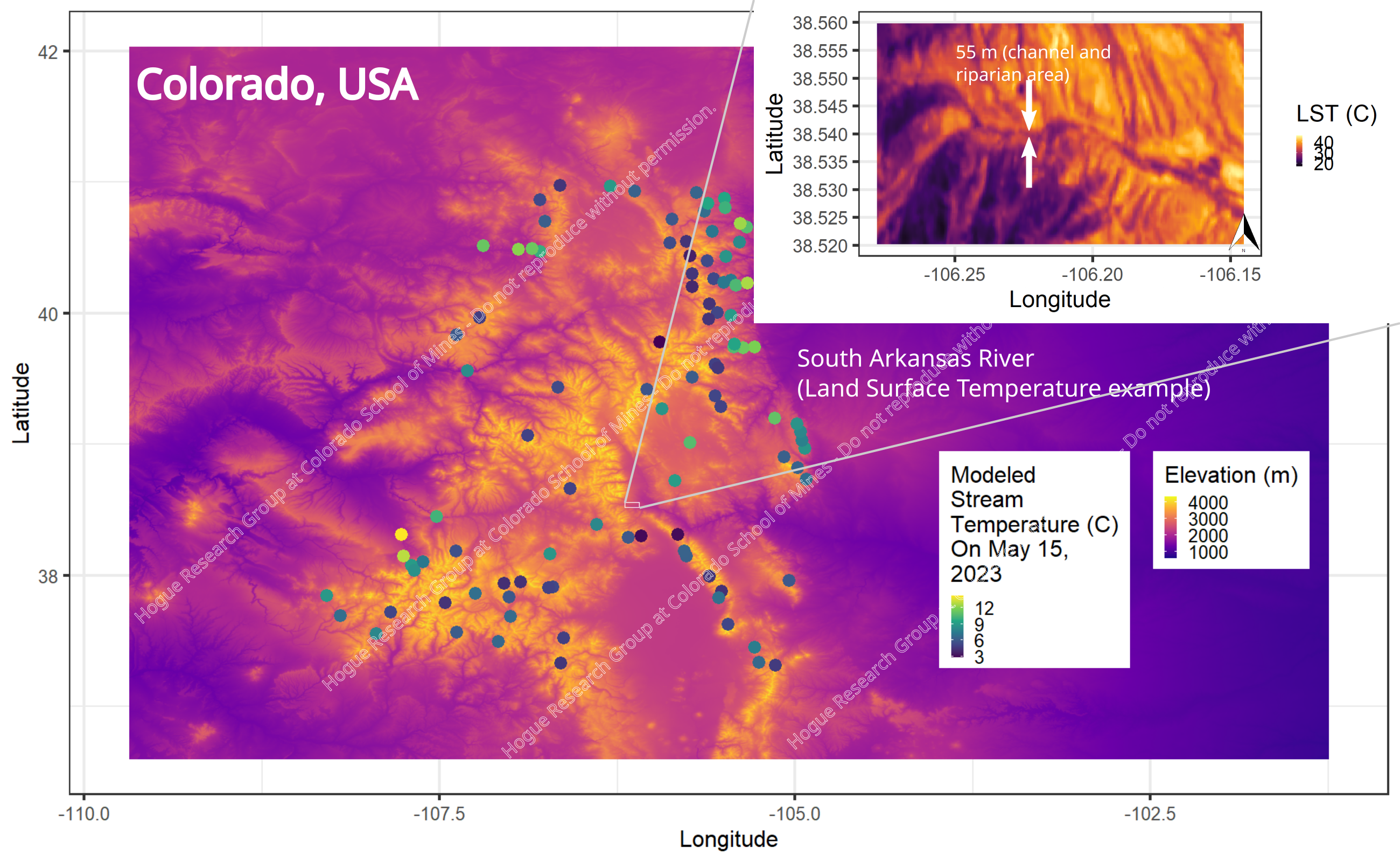CIROH Research at MINES
From the MINES Newsroom
Hydrology researchers at Colorado School of Mines are contributing to a major cooperative research effort to improve water modeling and prediction capabilities nationwide.
The Cooperative Institute for Research to Operations in Hydrology (CIROH) is made possible by $360 million in funding from the National Oceanic and Atmospheric Administration (NOAA). Headquartered at the University of Alabama’s Alabama Water Institute, CIROH consists of 28 academic institutions, non-profit organizations, government and industry partners from across the U.S. and Canada. Together, the goal is to develop and deliver national hydrological analyses, forecast information, data and guidance to inform emergency management and water supply decisions.
Below are some of the projects that CIROH scientists at Mines are working on. This page will be updated to reflect new projects over the coming months.

Current CIROH Projects
Development of a Machine Learning Model for Local to National River Temperature Modeling

Figure shows modeled stream temperatures for streams of varying size in Colorado for May 15, 2023 using the current prototype daily temperature model. In the inset, Landsat 9 land surface temperature shows the confluence of small tributaries with the South Arkansas River, located between Monarch and Poncha Springs, Rocky Mountains, Colorado. The satellite imagery captures the cooler temperatures of the small river and tributaries, supporting the use of remote sensing-based temperature modeling.
Project team and contacts
Terri Hogue, Ph.D, Dean and Professor, Civil and Envi. Engineering
Claudia Corona, Ph.D, Postdoctoral Fellow, Civil and Envi. Engineering
Daniel Philippus, Ph.D student, Civil and Envi. Engineering
Principal Investigator, Terri Hogue
Project Summary
Our research focuses on developing a suite of data-driven machine learning models to support stream temperature analysis, forecasting, and reach-scale modeling across the contiguous United States (CONUS).
Currently, we are finalizing a remote-sensing based model of monthly stream temperatures for a historical period, and will build on this to create a machine-learning model capable of accurately forecasting stream temperature for the CONUS at a daily time step.
Ultimately, we will develop independent models to estimate historical stream temperature conditions, as well as daily-to-weekly and possibly sub-seasonal to seasonal temperature forecasts, with the goal being to model high-resolution behaviors and disturbances at the reach scale.
Creation of a Quasi-Operational Water Prediction Testbed System with Evaluation and Integration of CIROH Advances

Figure shows linkages of CHPT with other elements of CIROH, including other CIROH project teams, the CIROH Cyberinfrastructure project, and the evaluation efforts including the CIROH Evaluation project and the OWP Water Resources Evaluation Service.
Project team and contacts
Andy Wood, Ph.D, Research professor, Civil and Envi. Engineering
Josh Sturtevant, Ph.D student, Civil and Envi. Engineering
Juliette Mukangango, Ph.D candidate, Statistics
Principal Investigator, Andy Wood
Project Summary
The CIROH Hydrologic Prediction Testbed (CHPT) project is an initiative to establish rigorous, quantitative intercomparison and benchmarking operational hydrologic forecasts, including the multiple elements (models, methods, datasets) involved in producing them. It is led through a CIROH-funded project at the Colorado School of Mines (Mines), and collaborates with multiple CIROH forecasting projects as well as external research and operational partners. The CHPT promotes overall benchmark-based development paradigm, and collects and tracks the performances of innovations in each area. It defines multiple community protocols for different forecasting objectives and also forecasting sub-component objectives to facilitate consistent intercomparison and evaluation of innovations arising from distinct projects across CIROH, as benchmarked against operational and non-operational baseline capabilities, as appropriate. As it matures, the CHPT will enable the US to quantify and track the current performance of its hydrologic forecasting capabilities, many for the first time, enabling evidence-driven decisions regarding the adoption of new forecast elements into operational practice.